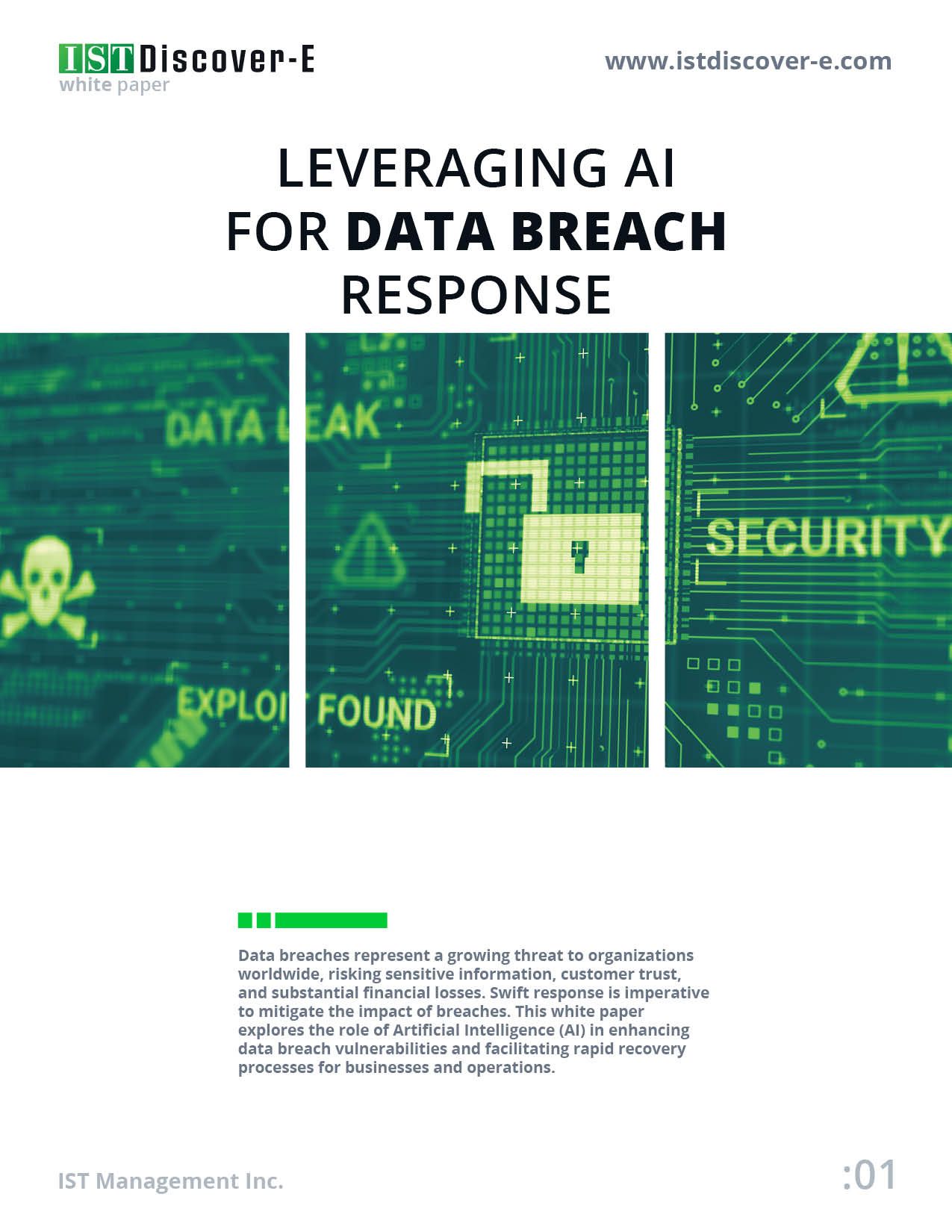Leveraging AI for Data Breach Response
Our digital landscape is a thriving environment for new and more nuanced data breaches. According to a study by Mandiant, 80% of large law firms in the US have been hacked since 2011. If we include businesses and corporations, the potential threat increases significantly. Consequently, organizations must arm themselves with tools and strategies to combat breaches effectively. Leveraging AI, particularly in the realms of Named Entity Recognition (NER) and contextual understanding of AI, offers promising avenues for swift recovery and better understanding on an organization’s data risk.
Understanding Data Breaches
On the surface, data breaches may seem like one isolated event, but the repercussions are costly. Regulatory frameworks like GDPR, HIPAA, and CPRA mandate severe penalties for organizations failing to secure data or disclose breaches promptly. This, in addition to investigation expenses and reputational damage, can severely delay ongoing business and impact growth for months.
Data breaches typically aren’t fully masterminded by bad actors but result from faulty human error. One misguided action may result in the creation of system vulnerabilities, insider threats, and targeted cyberattacks. Identifying and containing a breach can be a challenge with sensitive data spread across various systems and lengthy manual review processes. Some compromised data may be contained in unstructured data, making it more difficult to locate and identify. Having technology and processes in place to proactively respond is imperative for firms and businesses in a landscape where breaches aren’t just possible but likely. Named Entity Recognition (NER) technologies play a vital role in enhancing this process, by streamlining the legal process in responding to data breaches, and minimizing damage.
Understanding Named Entity Recognition (NER)
Named Entity Recognition (NER) involves machine learning algorithms that identify and categorize critical information in text, such as names, organizations, and Personal Identifiable Information (PII) like social security numbers or credit card information. Organizations can streamline legal response and categorization by automating this process, enhancing response times and accuracy.
The Benefits NER Can Have on Data Breaches
- Rapid Detection: NER enables swift identification of indicators of compromise, reducing detection times and facilitating prompt response efforts.
- Accurate Classification: NER can identify important PII, like dates of birth, SSNs, addresses, etc., producing a complete list of all entities affected and their associated data. This allows organizations to prioritize response actions efficiently, allocating resources effectively.
- Streamlined Remediation: Named Entity Recognition automates remediation tasks, such as data masking, encryption, and access restriction, expediting the recovery process and minimizing disruption to business operations.
- Continuous Improvement: Machine learning algorithms adapt and learn from new data, enhancing their effectiveness in detecting and mitigating evolving cyber threats over time.
- Regulatory Compliance: NER aids organizations in complying with regulatory requirements such as GDPR and HIPAA, ensuring the protection of sensitive data and mitigating legal risks.
Gaining Insight into Employee Engagement
Contextual understanding of AI complements Named Entity Recognition by identifying potential security threats in employee communications. Analyzing sentiment helps gauge employee morale and job satisfaction, enabling proactive intervention to address underlying issues. can also benefit productivity. By analyzing employee feedback, organizations can use this tool to target job satisfaction and potential areas of growth.
Best Practices for Data Security
Tools are only as defensible as those wielding them. In addition to applying AI tools like NER, organizations should:
- Conduct comprehensive employee training in cybersecurity awareness.
- Implement multi-factor authentication.
- Encrypt sensitive data to mitigate risks of compromise.
- Develop an incident response plan to streamline breach response efforts.
Conclusion
Data breaches significantly threaten organizations across industries, necessitating robust response mechanisms. Leveraging AI, particularly Named Entity Recognition and Sentiment Analysis, offers promising avenues for enhancing breach response, and mitigation efforts. By embracing these technologies and adhering to best practices in data security, organizations can effectively safeguard sensitive information, mitigate risks, and uphold customer trust in an increasingly digital world.




